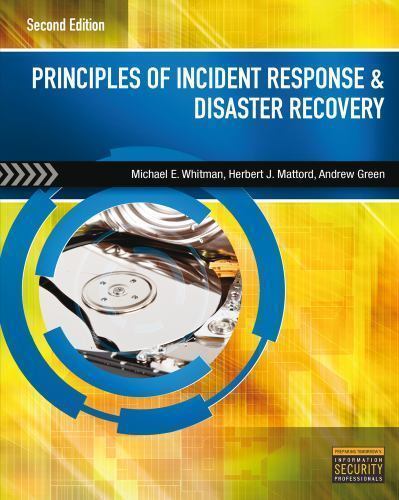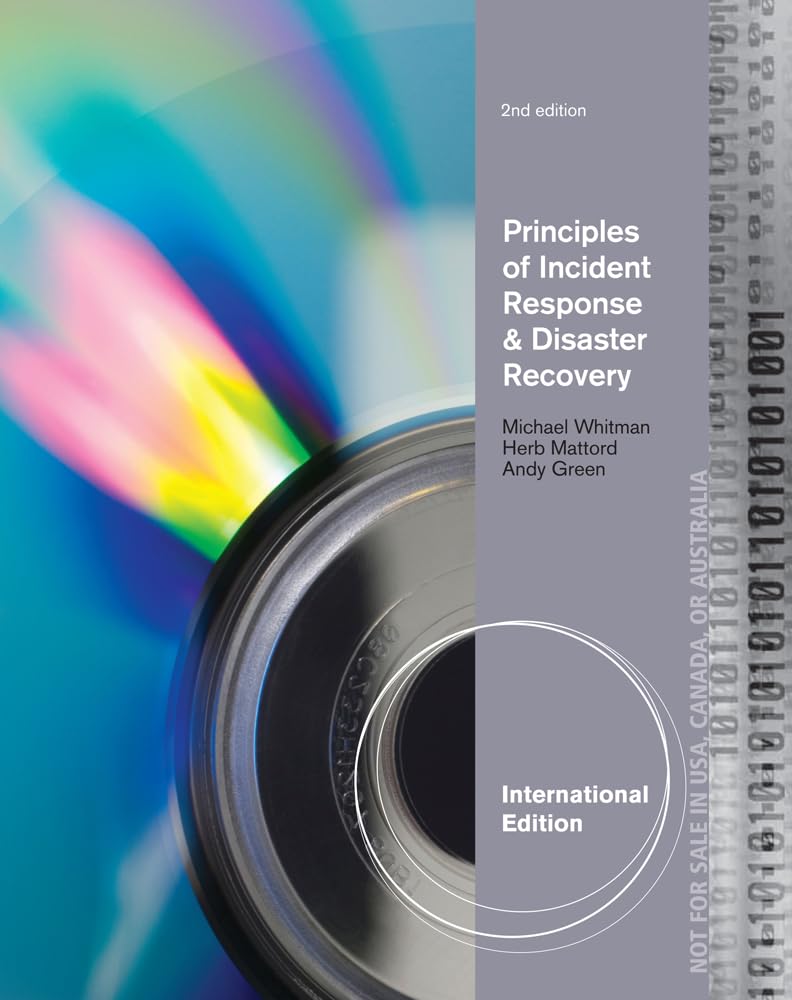Your cart is currently empty!
Tag: principles of incident response and disaster recovery

The Essential Principles of Effective Incident Response and Disaster Recovery
In today’s digital age, organizations face an increasing number of cybersecurity threats and natural disasters that can disrupt operations and put sensitive data at risk. To mitigate these risks, it is essential for businesses to have a comprehensive incident response and disaster recovery plan in place. These plans outline the steps that need to be taken in the event of an incident or disaster to minimize the impact on the organization and ensure a swift recovery.There are several key principles that should be incorporated into any effective incident response and disaster recovery plan. These principles include:
1. Preparation: The first step in effective incident response and disaster recovery is preparation. This involves identifying potential risks and vulnerabilities, conducting risk assessments, and developing a plan that outlines how the organization will respond in the event of an incident or disaster. This plan should include detailed procedures for notifying stakeholders, assessing the extent of the damage, and implementing recovery measures.
2. Communication: Communication is crucial during an incident or disaster. It is important to establish clear lines of communication with key stakeholders, including employees, customers, vendors, and regulatory agencies. Regular updates should be provided on the status of the incident and the organization’s response efforts. Effective communication can help to mitigate confusion and ensure a coordinated response.
3. Rapid Response: Time is of the essence when responding to an incident or disaster. Organizations should have a rapid response team in place that is trained to quickly assess the situation, contain the damage, and implement recovery measures. This team should be empowered to make decisions quickly and take action to minimize the impact on the organization.
4. Backup and Recovery: Regularly backing up critical data and systems is essential for disaster recovery. Organizations should have a robust backup strategy in place that includes offsite storage of backup data and regular testing to ensure that data can be restored quickly in the event of a disaster. This will help to minimize downtime and ensure that the organization can resume operations as quickly as possible.
5. Continuous Improvement: Incident response and disaster recovery plans should be regularly reviewed and updated to ensure that they remain effective in the face of evolving threats and technologies. Organizations should conduct regular drills and exercises to test their plans and identify areas for improvement. By continuously refining their response strategies, organizations can better protect themselves against future incidents and disasters.
In conclusion, effective incident response and disaster recovery are essential for organizations to mitigate risks and ensure business continuity in the face of cybersecurity threats and natural disasters. By following the essential principles outlined above, organizations can develop a comprehensive plan that will enable them to respond quickly and effectively to any incident or disaster that may arise. Investing in incident response and disaster recovery planning is an investment in the long-term resilience and success of the organization.

Principles of Cybersecurity
Price:$136.52– $99.80
(as of Dec 01,2024 15:05:11 UTC – Details)
Publisher : Goodheart-Willcox; First Edition, Student Textbook (July 31, 2018)
Language : English
Hardcover : 640 pages
ISBN-10 : 1635635535
ISBN-13 : 978-1635635539
Reading age : 14 – 18 years
Grade level : 9 – 12
Item Weight : 3.6 pounds
Dimensions : 8.5 x 0.74 x 10.88 inches
Cybersecurity is essential in today’s digital world to protect sensitive information and prevent cyber attacks. Here are some key principles of cybersecurity that individuals and organizations should follow:1. Keep software and systems up to date: Regularly updating software and systems helps to patch vulnerabilities and protect against potential cyber threats.
2. Use strong passwords and multi-factor authentication: Strong passwords and multi-factor authentication add an extra layer of security to accounts and help prevent unauthorized access.
3. Encrypt sensitive data: Encrypting sensitive data ensures that even if it is accessed by unauthorized users, it cannot be read or understood.
4. Limit access to sensitive information: Only provide access to sensitive information to those who need it and regularly review and update access permissions.
5. Backup data regularly: Regularly backing up data ensures that in the event of a cyber attack or data breach, important information can be recovered.
6. Educate employees on cybersecurity best practices: Training employees on cybersecurity best practices helps to prevent human error and protect against social engineering attacks.
7. Monitor network activity: Monitoring network activity helps to detect and respond to suspicious behavior or potential security incidents.
By following these principles of cybersecurity, individuals and organizations can strengthen their defenses against cyber threats and protect their valuable information.
#Principles #Cybersecurity
Principles of Incident Response and Disaster Recovery by Herbert J. Mattord and

Principles of Incident Response and Disaster Recovery by Herbert J. Mattord and
Price : 5.99
Ends on : N/A
View on eBay
In their book “Principles of Incident Response and Disaster Recovery,” authors Herbert J. Mattord and Michael E. Whitman provide a comprehensive guide to handling and recovering from cybersecurity incidents and disasters. This essential resource covers the key principles and best practices for incident response and disaster recovery, including planning, preparation, detection, containment, eradication, recovery, and lessons learned.The book emphasizes the importance of a proactive approach to cybersecurity, focusing on prevention and mitigation strategies to minimize the impact of incidents and disasters. It also highlights the critical role of incident response teams in effectively responding to and managing incidents in a timely and efficient manner.
With real-world case studies and practical examples, “Principles of Incident Response and Disaster Recovery” offers valuable insights into the challenges and complexities of incident response and disaster recovery in today’s rapidly evolving threat landscape. Whether you are a cybersecurity professional, IT manager, or business leader, this book is a must-read for anyone looking to enhance their organization’s resilience to cyber threats.
#Principles #Incident #Response #Disaster #Recovery #Herbert #Mattord
Understanding the Principles of Incident Response and Disaster Recovery
Incident response and disaster recovery are two critical components of any organization’s cybersecurity strategy. In the event of a cyberattack or natural disaster, having a well-defined incident response and disaster recovery plan can mean the difference between quickly mitigating the damage and facing irreparable losses.Incident response is the process of reacting to and managing a security breach or cyberattack. It involves detecting, analyzing, and responding to security incidents in a timely and effective manner. The goal of incident response is to minimize the impact of the incident, contain the damage, and restore normal operations as quickly as possible. Key principles of incident response include:
1. Preparation: Before an incident occurs, organizations should have a well-documented incident response plan in place. This plan should outline roles and responsibilities, communication protocols, and steps to take in the event of a security breach.
2. Detection and analysis: Organizations should have systems in place to detect security incidents in real-time and analyze the scope and severity of the incident. This may involve monitoring network traffic, analyzing logs, and conducting forensic investigations.
3. Containment: Once an incident has been detected, it is important to contain the damage and prevent further compromise of systems and data. This may involve isolating affected systems, shutting down compromised accounts, and blocking malicious traffic.
4. Eradication: After containment, organizations should work to remove the root cause of the incident and ensure that all systems and data are secure. This may involve patching vulnerabilities, removing malware, and implementing additional security measures.
5. Recovery: Once the incident has been mitigated, organizations should work to restore normal operations and minimize downtime. This may involve restoring data from backups, reconfiguring systems, and implementing additional security controls.
Disaster recovery, on the other hand, is the process of restoring IT systems and data in the event of a natural disaster, cyberattack, or other catastrophic event. The goal of disaster recovery is to ensure the continuity of operations and minimize the impact of the disaster on the organization. Key principles of disaster recovery include:
1. Business impact analysis: Organizations should conduct a thorough assessment of their systems and data to identify critical assets and prioritize recovery efforts. This may involve categorizing systems based on their importance to the organization and determining the maximum tolerable downtime for each system.
2. Backup and recovery: Organizations should regularly back up their data and systems to ensure that they can be quickly restored in the event of a disaster. This may involve using cloud-based backup solutions, offsite storage, and redundant systems.
3. Testing and validation: Organizations should regularly test their disaster recovery plan to ensure that it is effective and can be executed quickly and efficiently. This may involve conducting tabletop exercises, simulating disaster scenarios, and validating backups.
4. Communication and coordination: During a disaster, it is important to maintain open communication and coordination among all stakeholders. This may involve establishing a clear chain of command, coordinating with external partners, and keeping employees informed of the situation.
By understanding the principles of incident response and disaster recovery, organizations can better prepare for and respond to security incidents and disasters. Implementing robust incident response and disaster recovery plans can help organizations minimize the impact of incidents, protect critical assets, and ensure the continuity of operations.

Principles of Cybersecurity
Price: $42.00
(as of Nov 30,2024 00:28:18 UTC – Details)
ASIN : B0D4CB625N
Publisher : Goodheart-Willcox (January 26, 2024)
Language : English
Paperback : 204 pages
ISBN-13 : 979-8888178584
Item Weight : 14.1 ounces
Principles of CybersecurityCybersecurity is a crucial aspect of protecting sensitive information and data from cyber threats and attacks. To ensure a strong defense against potential breaches, it is essential to adhere to the following principles of cybersecurity:
1. Confidentiality: Information should only be accessible to authorized individuals and kept confidential from unauthorized users.
2. Integrity: Data should remain accurate and reliable throughout its lifecycle, without any unauthorized modifications or alterations.
3. Availability: Information should be accessible to authorized users whenever they need it, ensuring that systems and data remain available and operational.
4. Authentication: Users should be required to authenticate themselves before accessing sensitive information, using strong passwords, biometrics, or other secure methods.
5. Authorization: Users should only have access to the information and resources that are necessary for their roles and responsibilities, based on their authorization levels.
6. Accountability: Users should be held accountable for their actions within the system, ensuring that any unauthorized or malicious behavior can be traced back to the responsible individual.
7. Risk management: Regular risk assessments and evaluations should be conducted to identify potential vulnerabilities and threats, allowing for proactive measures to be taken to mitigate risks.
8. Incident response: A well-defined incident response plan should be in place to quickly and effectively respond to cybersecurity incidents, minimizing the impact and restoring normal operations as soon as possible.
By following these principles of cybersecurity, organizations can strengthen their defense against cyber threats and protect their valuable information and data from potential breaches.
#Principles #Cybersecurity
Principles of Incident Response and Disaster Recovery
Price: $44.20
(as of Nov 29,2024 12:38:15 UTC – Details)
ASIN : 1133673686
Publisher : CENGAGE SP; 2nd edition (March 1, 2013)
Language : English
Paperback : 576 pages
ISBN-10 : 9781133673682
ISBN-13 : 978-1133673682
Item Weight : 2.31 pounds
Dimensions : 7.44 x 1.26 x 9.17 inches
Principles of Incident Response and Disaster RecoveryIn today’s digital age, organizations must be prepared to effectively respond to incidents and recover from disasters in order to protect their assets and maintain business continuity. Here are some key principles to keep in mind when developing an incident response and disaster recovery plan:
1. Preparedness: It is crucial to have a well-defined incident response and disaster recovery plan in place before an incident occurs. This plan should outline roles and responsibilities, communication protocols, and steps to be taken in the event of a security breach or disaster.
2. Detection and Reporting: Organizations must have mechanisms in place to detect and report incidents promptly. This may include implementing monitoring tools, conducting regular security audits, and training employees to recognize and report suspicious activity.
3. Containment and Eradication: Once an incident has been detected, it is important to quickly contain the threat and prevent it from spreading further. This may involve isolating affected systems, disabling compromised accounts, and removing malware.
4. Recovery and Restoration: After the incident has been contained and eradicated, the focus shifts to recovering data and restoring systems to normal operation. This may involve restoring backups, rebuilding systems, and implementing additional security measures to prevent future incidents.
5. Lessons Learned: After an incident has been resolved, it is important to conduct a post-incident review to identify what went wrong, what worked well, and how processes can be improved in the future. This information can be used to update the incident response and disaster recovery plan and enhance overall cybersecurity posture.
By following these principles, organizations can effectively respond to incidents and recover from disasters, minimizing the impact on their operations and reputation. Remember, being prepared is key to successfully navigating the ever-evolving threat landscape.
#Principles #Incident #Response #Disaster #Recovery
Principles of Incident Response and Disaster Recovery – Paperback – GOOD

Principles of Incident Response and Disaster Recovery – Paperback – GOOD
Price : 5.33
Ends on : N/A
View on eBay
Looking for a comprehensive guide on incident response and disaster recovery? Look no further than “Principles of Incident Response and Disaster Recovery” in paperback format. This book covers all the essential principles and strategies needed to effectively handle and mitigate incidents and disasters in any organization.With detailed explanations and real-world examples, this book is perfect for both beginners and experienced professionals in the field. Whether you’re looking to enhance your knowledge or develop a solid incident response plan, this book has got you covered.
Don’t miss out on this valuable resource – grab your copy of “Principles of Incident Response and Disaster Recovery” today and take your incident response skills to the next level!
#Principles #Incident #Response #Disaster #Recovery #Paperback #GOOD
